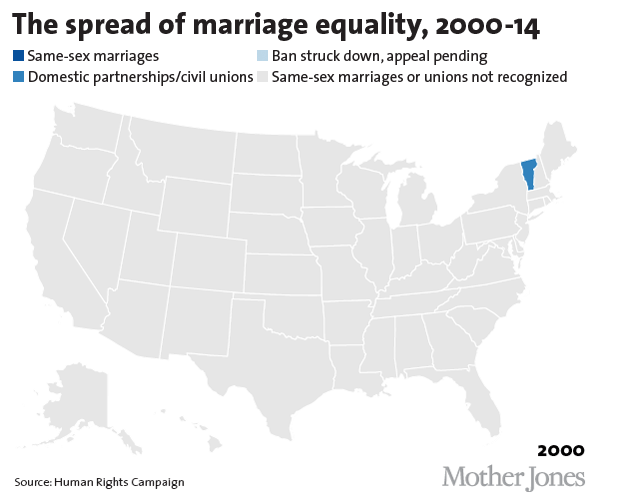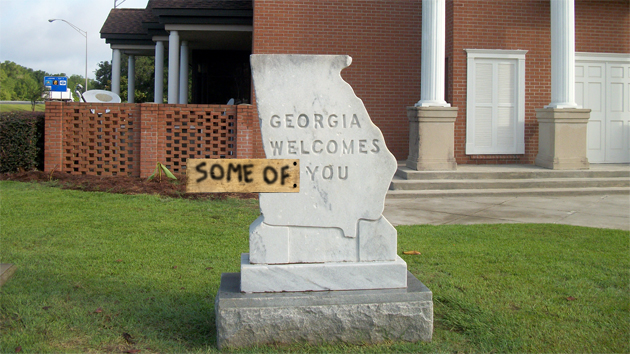
Almost 10 years after Massachusetts became the first state to recognize same-sex marriages, the most striking feature of the campaign for marriage equality is the speed at which it’s succeeding.
The map above shows the accelerating pace at which new states have begun issuing marriage licenses to same-sex couples or recognizing their relationships as domestic partnerships. As the result of court rulings, legislation, and voter referendums, 21 states and the District of Columbia now recognize some form of same-sex union—and 12 of them joined the pack in the past two years alone.
The year 2012 was a particularly important turning point. That’s when marriage equality activists mounted a massive campaign to reverse the pattern of defeat they’d suffered at the ballot box, and voters in Washington, Maine, and Minnesota recognized the rights of same-sex couples to marry. A US Supreme Court ruling, in June 2013, that the federal government must recognize existing same-sex marriages was another strong catalyst for marriage equality. Since late 2013, four federal judges have interpreted that ruling to mean that bans on same-sex marriages in their states are unconstitutional. In each of these states—Virginia, Texas, Utah, and Oklahoma—at least one state official is appealing the decision, preventing the state from issuing marriage licenses. And just last week, a federal judge ruled that Kentucky must recognize same-sex marriages performed elsewhere; Gov. Steve Beshear plans to ask for an indefinite stay of the order, and will fight the ruling.
A few things to note about the map: The Human Rights Campaign, an LGBT advocacy organization, characterizes Wisconsin’s domestic partnerships as limited in nature—the state law enumerates 43 rights same-sex partners enjoy, whereas married couples of the opposite sex are entitled to more than 200. Under Wisconsin law, it is illegal for same-sex couples to travel out of state in order to marry; couples who do so, and continue living in Wisconsin, risk a $10,000 fine and nine months in prison.
Utah is represented on the map as a state in which a federal judge struck down the state’s constitutional ban on same-sex marriage, only to be challenged on appeal. But US District Judge Robert Shelby did not block marriages while Utah prepared its appeal, so for two weeks in late December and early January, the state issued marriage licenses to 1,300 same-sex couples.
The map does not show the District of Columbia, which has issued licenses to same-sex couples since March 2010. California issued marriage licenses beginning in June of 2008 but stopped doing so that November, when voters passed Proposition 8. A Supreme Court decision overturned Prop. 8 in June 2013.











